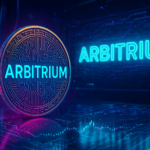The Ethereum blockchain, known for its diverse range of digital assets, is witnessing the emergence of ERC-404, an innovative token standard. This new framework seeks to amalgamate the characteristics of both ERC-20, the standard for fungible tokens, and ERC-721, the foundation for non-fungible tokens (NFTs), into a unique semi-fungible token. The concept behind ERC-404, crafted by developers Ctrl and Acme, is to create tokens that are semi-interchangeable, offering a novel asset class that blends the liquidity of fungible tokens with the distinctiveness of NFTs.
Understanding ERC-404’s Unique Approach
ERC-404 operates on a principle that allows parts of an NFT to be owned and transferred, an innovation beyond the indivisible nature of traditional NFTs. By utilizing a mint and burn mechanism, ERC-404 addresses the issue of fractional ownership; when a complete token is bought, an NFT is minted for the buyer, and conversely, when only a fraction of a token is sold, the NFT is burned. This mechanism permits the collection of fractional shares, which can eventually culminate in the minting of a whole new NFT for a wallet that accumulates a complete token.
Advancing Fractionalization and Liquidity
The ERC-404 standard introduces pioneering rules and transactional frameworks that facilitate the innate fractionalization of NFTs, fostering trading and experimentation within the digital asset sphere. It aims to incentivize trading and participation by supporting fractionalization, liquidity, and inventive feature sets. Projects like Pandora, employing ERC-404, suggest that this standard allows NFTs to maintain a real-time base price due to inherent liquidity. Unlike conventional methods, ERC-404 NFTs can be sold without needing a specific buyer, thanks to liquidity pools, and can be fractionalized without third-party interventions.
Several projects are already utilizing ERC-404, including Pandora with its PANDORA tokens and associated “Replicant” NFTs, DeFrogs themed around Pepe the Frog, and the Monkees PFP collection. Each of these demonstrates the standard’s diverse application possibilities.
Despite its innovative potential, ERC-404 remains an experimental and unofficial standard within the Ethereum ecosystem. It has not yet been proposed as an Ethereum Improvement Proposal (EIP) and lacks a comprehensive external audit, which may expose users to risks or vulnerabilities. The standard’s future hinges on its formal acceptance within the Ethereum framework and its ability to navigate the complexities of the approval process, while its current off-standard status may inspire other developers to follow a similar unsanctioned path.












